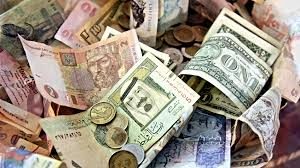See part 1 here: http://www.kataneh.com/index.php/2018/04/05/basics-of-macroeconomics-1/
These series of articles are for those intelligent group of people whose experties are not economics or finance, but are still interested to understand the impact of macroeconomic monetary and fiscal policies such as interest rates, taxes or spending on the overall course of economy, their businesses, their employers, investments and of course their daily life.Therefore, in these articles, I have knowingly avoided using economic and finance terms and jargon, as much as possible.
The impact of different macroeconomics monetary and fiscal policies on each other, economy and growth are complicated and may cause vicious, benign or virtuous cycles. It is like a polynomial equation with many different interactive factors and coefficients. Changing the value of each factor and each coefficient will not only generate a different result, but may even change the value of some other factors in that same equation! And of course, changing one factor may generate multiple or totally different results for different values of another factor.
Knowing all those facts, in this article, discussion is kept very simple and to the point. At any time, we focus on one causal impact of one factor only if ALL other factors are assumed to remain constant.
Part 2- Interest Rates, Currency and Imports/Exports
a- Mr. Max lives in Gondor where the interest rate is 1%, and therefore banks pay $1 of interest on every $100 in a saving account. But Mrs. Ruby lives in Arnor where the interest rate is 10%, and therefore $10 of interest is paid on every $100 in the bank.
Miss Louise lives in Mordor and has $100 to invest. Obviously, she prefers to receive higher return on her savings. So, she prefers Arnor with 10% of interest rate. Miss Louise will have to convert Mordor currency to Arnor currency and save in the bank or Arnor. This means that demand for Arnor money will increase, which again means that the value of Arnor currency will increase, because (all else remained unchanged) as demand grows, prices grow too. So, the higher the inflation is, the higher the interest rates are, and the higher the value of the currency is.
b- Imagine that Arnor and Gondor are neighbor countries. Arnor currency is more valuable than Gondor. It means that the purchasing power of Arnor money is more than Gondor’s. So, Arnorians can buy from Gondor much more than Gondorians can buy from Arnor! This means that Arnorians import easily from Gondor, but Gondorians export to Arnor. Therefore, the higher the inflation is, the higher the interest rates are, and the higher the value of the currency is, and the higher the imports are, and the lower the exports are.
For my Canadian friends, do you remember when Canadian dollar was traded above parity with the US dollar and Torontonians made cross border trips to shop in the US, but Canadian export and manufacturing hurt?
On a side note, do you remember when China was accused of engineering the devaluation of its currency to increase exports, and when Mr. Mnuchin said that the value of the US dollar is too high, which was IMMEDIATELY translated by investors as an indication of limiting the rise of interest rates?
Summary of parts 1 and 2:
Lower interest rates cause price inflation. To tame inflation interest rates should increase.
Higher interest rates encourage savings and limit spending. The higher the interest rates are the more interest banks pay on people’s savings.
The higher the interest rate is, the higher the value of the currency is, and therefore exports will decrease, but imports increase.


One Reply to “Basics of Macroeconomics 2”
Comments are closed.